ABSTRACT
In this paper, a refined reference current generation algorithm based on instantaneous power (pq) theory is proposed, for operation of an indirect current controlled (ICC) three-level neutral-point diode clamped (NPC) inverter-based shunt active power filter (SAPF) under non-sinusoidal source voltage conditions. SAPF is recognized as one of the most effective solutions to current harmonics due to its flexibility in dealing with various power system conditions.
As for its controller, pq theory has widely been applied to generate the desired reference current due to its simple implementation features. However, the conventional dependency on self-tuning filter (STF) in generating reference current has significantly limited mitigation performance of SAPF. Besides, the conventional STF-based pq theory algorithm is still considered to possess needless features which increase computational complexity. Furthermore, the conventional algorithm is mostly designed to suit operation of direct current controlled (DCC) SAPF which is incapable of handling switching ripples problems, thereby leading to inefficient mitigation performance.
Therefore, three main improvements are performed which include replacement of STF with mathematical-based fundamental real power identifier, removal of redundant features, and generation of sinusoidal reference current. To validate effectiveness and feasibility of the proposed algorithm, simulation work in MATLAB-Simulink and laboratory test utilizing a TMS320F28335 digital signal processor (DSP) are performed. Both simulation and experimental findings demonstrate superiority of the proposed algorithm over the conventional algorithm.
SHUNT ACTIVE POWER FILTER (SAPF) WITH CONTROL ALGORITHMS
Circuit configuration of the proposed three-phase SAPF is shown in Figure 1. A three-level NPC inverter is employed as the SAPF and it is connected at point of common coupling (PCC) between the three-phase non-sinusoidal voltage supply and the nonlinear rectifier load. The rectifier is further connected to two types of loads: resistive (R) and inductive (RL) loads. Meanwhile, the SAPF’s controller consists of four control algorithms: reference current generation, DC-link capacitor voltage regulation.
REFINED SELF-TUNING FILTER-BASED INSTANTANEOUS POWER (PQ) THEORY ALGORITHM
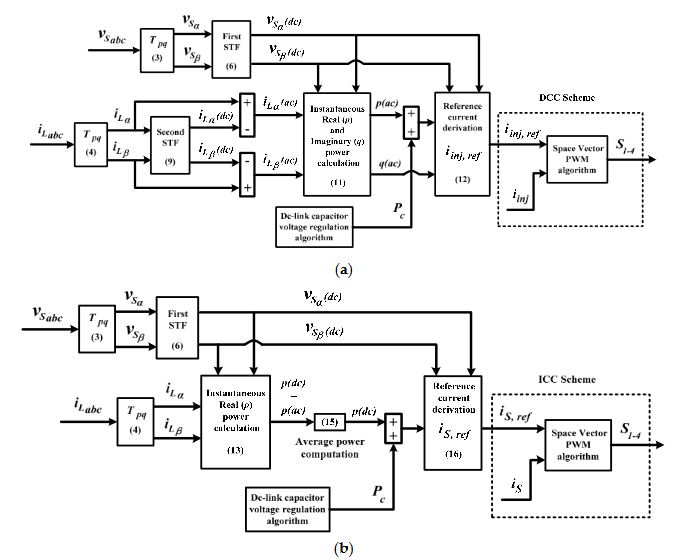
Figure 2. Reference current generation algorithms: (a) conventional STF-pq theory and (b) refined STF-pq theory
The working principle of the conventional STF-pq theory algorithm is shown in Figure 2a. Generally, the reference current generation process is accomplished via a series of mathematical calculations of instantaneous power in a balanced three-phase system. The calculations are conducted in the α-β domain where all the required three-phase signals are converted into their respective two-phase α-β representation.
SIMULATION RESULTS
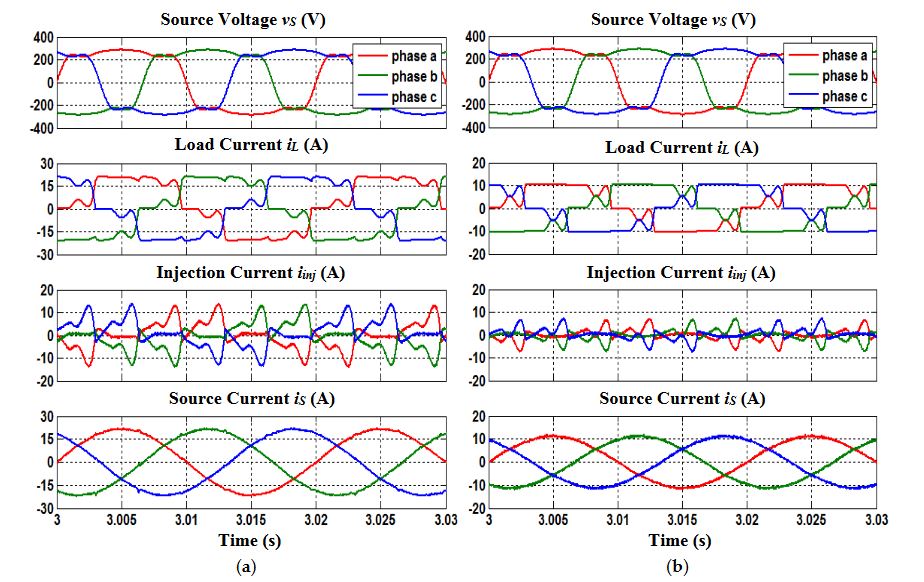
Figure 3. Steady-state simulation waveforms (case 1) of SAPF utilizing the refined STF-pq theory
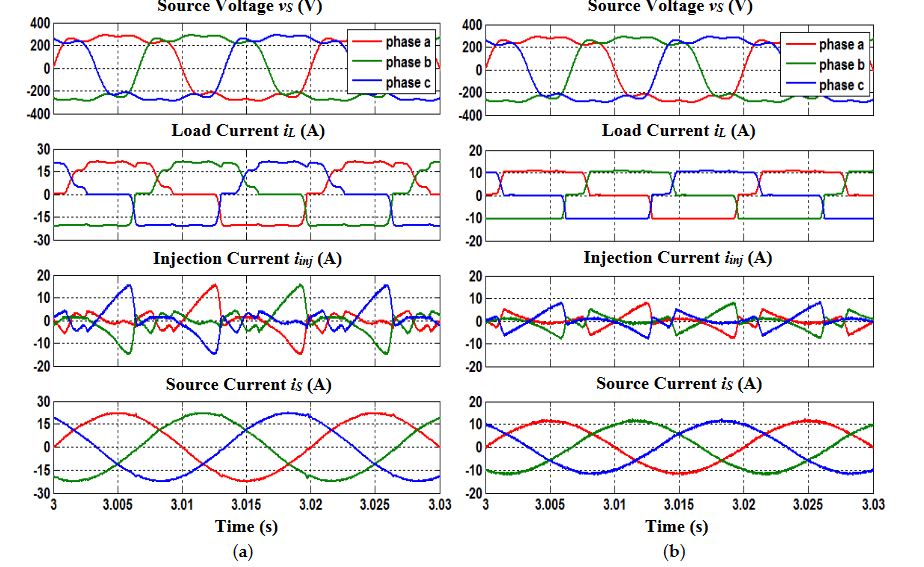
Figure 4. Steady-state simulation waveforms (case 2) of SAPF utilizing the refined STF-pq theory
For the case 1 non-sinusoidal source voltage condition, steady-state simulation waveforms of SAPF utilizing the refined STF-pq theory algorithm which includes three-phase source voltage vS, load current iL, injection current iinj, and source current iS, for resistive and inductive loads are shown in Figure 3. Meanwhile, for the case 2 non-sinusoidal source voltage condition, the steady-state simulation waveforms are shown in Figure 4.
EXPERIMENTAL VERIFICATION
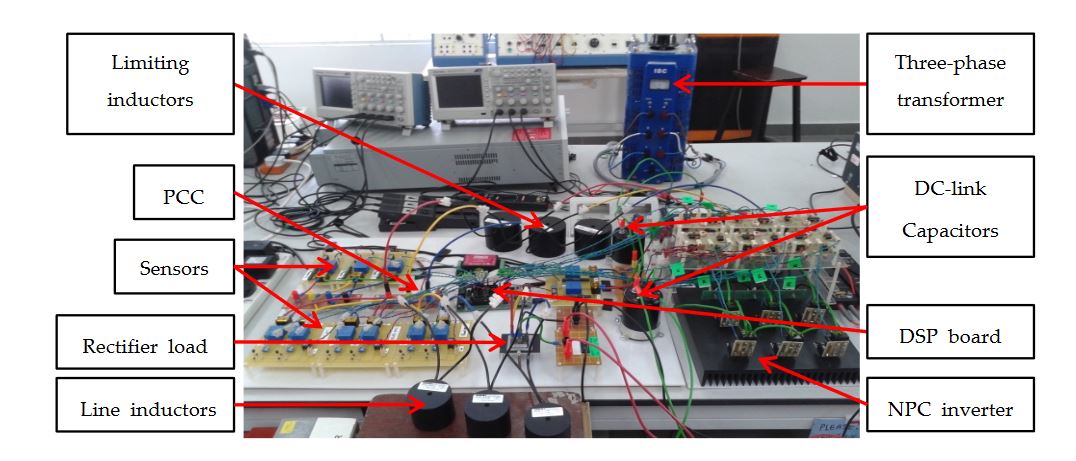
Figure 9. Experimental setup for the proposed shunt active power filter (SAPF)
A laboratory prototype was developed to validate practically the performance of the refined STF-pq theory algorithm. The experimental setup for the proposed SAPF is shown in Figure 9. For experimental testing, a three-phase, 50 Hz, 100 Vrms, non-sinusoidal voltage source is considered, and it is supplied from a three-phase practical transformer.
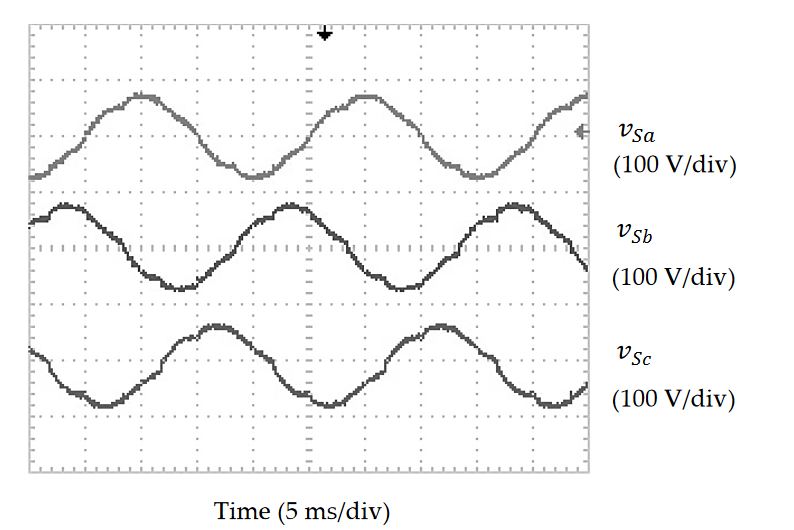
Figure 10. Steady-state experimental waveforms of the three-phase non-sinusoidal source voltage
The waveforms of source voltage applied in experimental testing are shown in Figure 10. It can be seen that the source voltage is balanced but non-sinusoidal with THD = 6.91%. Meanwhile, the desired overall DC-link reference voltage is set at 220 V. Furthermore, a TMS320F28335 DSP board is configured and programmed to perform all control algorithms of the SAPF and to generate the desired PWM switching pulses for the three-phase three-level NPC inverter.
CONCLUSIONS
This paper has successfully demonstrated a refined reference current generation algorithm based on STF-pq theory for a three-phase three-level NPC inverter-based SAPF. In this algorithm, three main refinements are performed which include incorporation of a mathematical-based fundamental real power identifier, simplification of the algorithm complexity and generation of a sinusoidal reference current. Comprehensive analyses in both steady-state and dynamic-state conditions are conducted to evaluate the performance of the proposed algorithm.
Simulation work reveals that utilization of the proposed algorithm improves the mitigation performance of SAPF during steady-state conditions by achieving low THD values. Moreover, a significant improvement can be observed during dynamic-state conditions where the proposed algorithm performs successfully with fast response times. The proposed algorithm is not limited to inverter-based SAPF with a specific type of load or under specific non-sinusoidal source voltage conditions.
In fact, it is proven to work effectively with various types of nonlinear loads and under highly harmonic-distorted non-sinusoidal source voltages. Furthermore, the experimental findings have confirmed the effectiveness of the proposed algorithm in both steady-state and dynamic-state conditions as shown in simulation work. The low THD value and fast response time clearly show the advantages of the refined STF-pq theory algorithm over the conventional STF-pq theory algorithm, especially in dealing with dynamic-state conditions.
Source: University Putra Malaysia
Authors: Yap Hoon | Mohd Amran Mohd Radzi | Mohd Khair Hassan | Nashiren Farzilah Mailah
>> 200+ Matlab Projects for Control System for Final Year Students
>> More Matlab DSP Project Ideas for Engineering Students